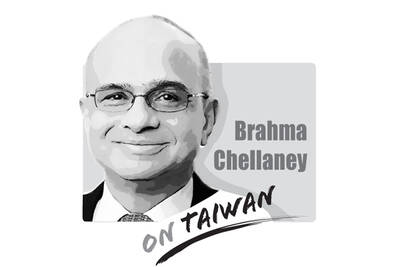The government’s proposed comprehensive economic cooperation agreement (CECA) with China continues to make headlines as opposition parties and activists condemn the plan and vow to take to the streets or try to recall the president if the government presses ahead with signing it.
Amid all the furor, however, government officials have done little to provide the public with information about the proposal. In fact, they have often contradicted one another.
Minister of Economic Affairs Yiin Chii-ming (尹啟銘), for one, has said “the CECA means an FTA [free trade agreement],” while Mainland Affairs Council Chairwoman Lai Shin-yuan (賴幸媛) chided Democratic Progressive Party Chairperson Tsai Ing-wen (蔡英文) for confusing a CECA with an FTA.
Straits Exchange Foundation (SEF) Secretary-General Kao Koong-lian (高孔廉) then said that signing the CECA was an urgent matter, while SEF Chairman Chiang Pin-kung (江丙坤) on Tuesday said he hoped the two sides of the Taiwan Strait could complete an outline of the pact by year’s end.
Premier Liu Chao-shiuan (劉兆玄) told lawmakers on Tuesday that there was no timetable for signing a CECA.
And there’s more: Presidential Office Spokesman Wang Yu-chi (王郁琦) on Tuesday said the Presidential Office would seek a public consensus on the pact’s content and name, even though President Ma Ying-jeou (馬英九) had ruled out holding a referendum on the matter.
What’s going on? How does the government expect the public to buy the idea when its own officials can’t get on the same page? Most people are clueless about the CECA proposal and what it would mean to them.
The Ma administration has said signing an economic pact with Beijing would help Taiwan by helping it avoid marginalization after China, Japan and South Korea enter into a free-trade agreement with ASEAN, which is scheduled to be finalized by 2012 with Seoul’s accession. The government also said such a pact would allow Taiwan and China to offer each other economic and trade privileges, such as lifting non-tariff trade barriers and import duties.
There are two sides to any story, and while the Ma government has found it difficult to present a united front on the timing of the proposed CECA, it has been unanimous in avoiding mention of any downside to such a deal. What will happen to Taiwan’s agricultural and manufacturing industries when cheaper Chinese products start pouring in after a CECA is signed?
Ma has said there would be no importation of Chinese labor or increase in Chinese agricultural products, but that would violate the reciprocal spirit of the pact, how does Ma know China would agree without any objection? How can the government be sure that signing a CECA would guarantee Taiwanese entry into ASEAN?
Many questions remain unanswered. It would be irresponsible for the government to push ahead with the proposal without giving the public a clear explanation of the benefits and drawbacks of the deal. This is not a case of “father knows best.”

As strategic tensions escalate across the vast Indo-Pacific region, Taiwan has emerged as more than a potential flashpoint. It is the fulcrum upon which the credibility of the evolving American-led strategy of integrated deterrence now rests. How the US and regional powers like Japan respond to Taiwan’s defense, and how credible the deterrent against Chinese aggression proves to be, will profoundly shape the Indo-Pacific security architecture for years to come. A successful defense of Taiwan through strengthened deterrence in the Indo-Pacific would enhance the credibility of the US-led alliance system and underpin America’s global preeminence, while a failure of integrated deterrence would
US President Donald Trump created some consternation in Taiwan last week when he told a news conference that a successful trade deal with China would help with “unification.” Although the People’s Republic of China has never ruled Taiwan, Trump’s language struck a raw nerve in Taiwan given his open siding with Russian President Vladimir Putin’s aggression seeking to “reunify” Ukraine and Russia. On earlier occasions, Trump has criticized Taiwan for “stealing” the US’ chip industry and for relying too much on the US for defense, ominously presaging a weakening of US support for Taiwan. However, further examination of Trump’s remarks in
It is being said every second day: The ongoing recall campaign in Taiwan — where citizens are trying to collect enough signatures to trigger re-elections for a number of Chinese Nationalist Party (KMT) legislators — is orchestrated by the Democratic Progressive Party (DPP), or even President William Lai (賴清德) himself. The KMT makes the claim, and foreign media and analysts repeat it. However, they never show any proof — because there is not any. It is alarming how easily academics, journalists and experts toss around claims that amount to accusing a democratic government of conspiracy — without a shred of evidence. These
China on May 23, 1951, imposed the so-called “17-Point Agreement” to formally annex Tibet. In March, China in its 18th White Paper misleadingly said it laid “firm foundations for the region’s human rights cause.” The agreement is invalid in international law, because it was signed under threat. Ngapo Ngawang Jigme, head of the Tibetan delegation sent to China for peace negotiations, was not authorized to sign the agreement on behalf of the Tibetan government and the delegation was made to sign it under duress. After seven decades, Tibet remains intact and there is global outpouring of sympathy for Tibetans. This realization